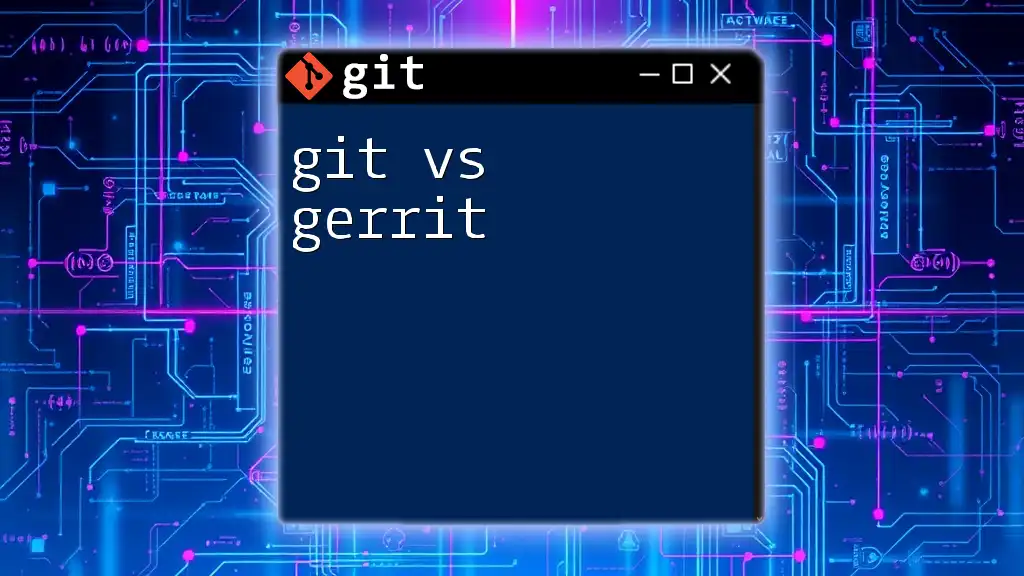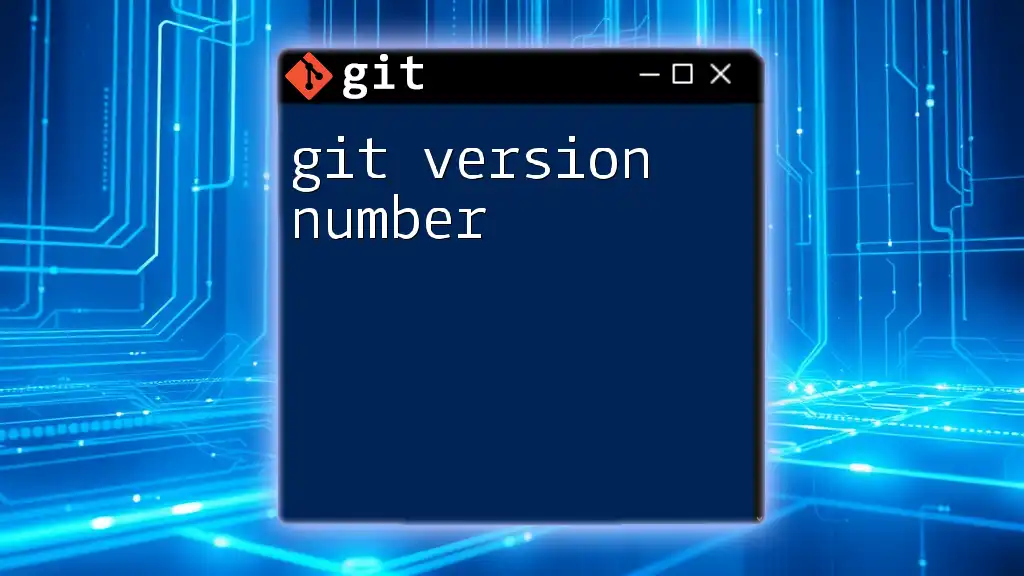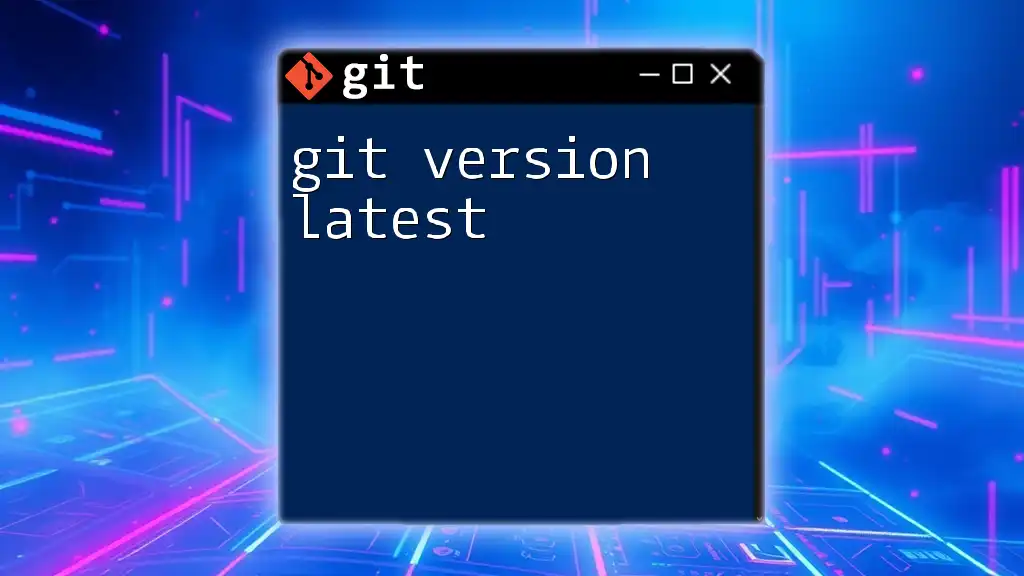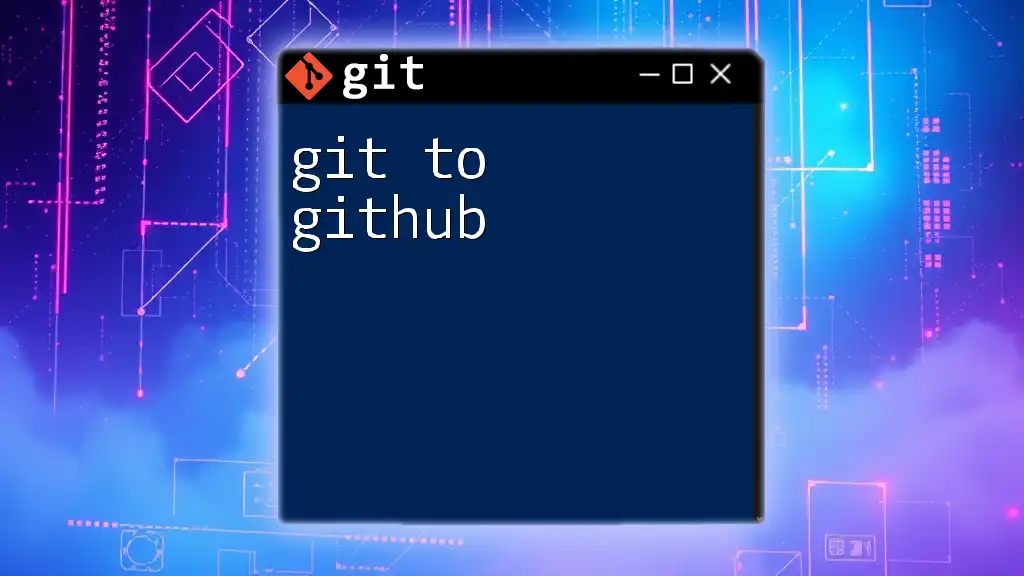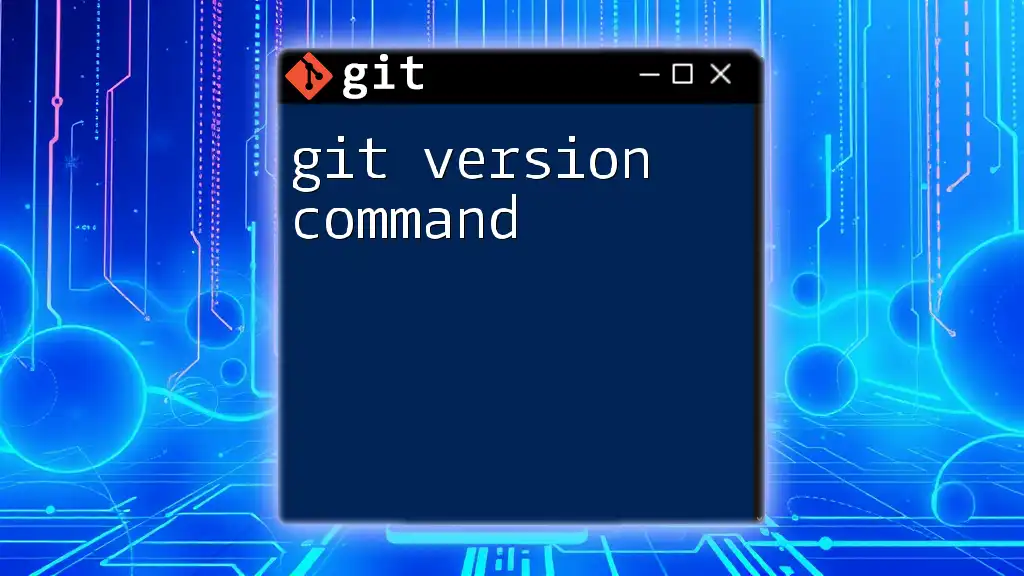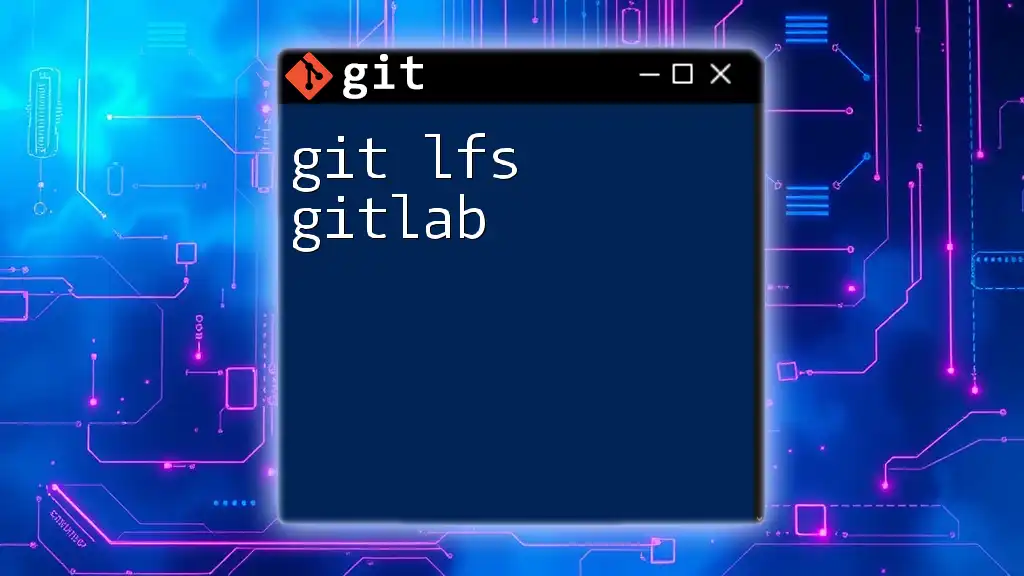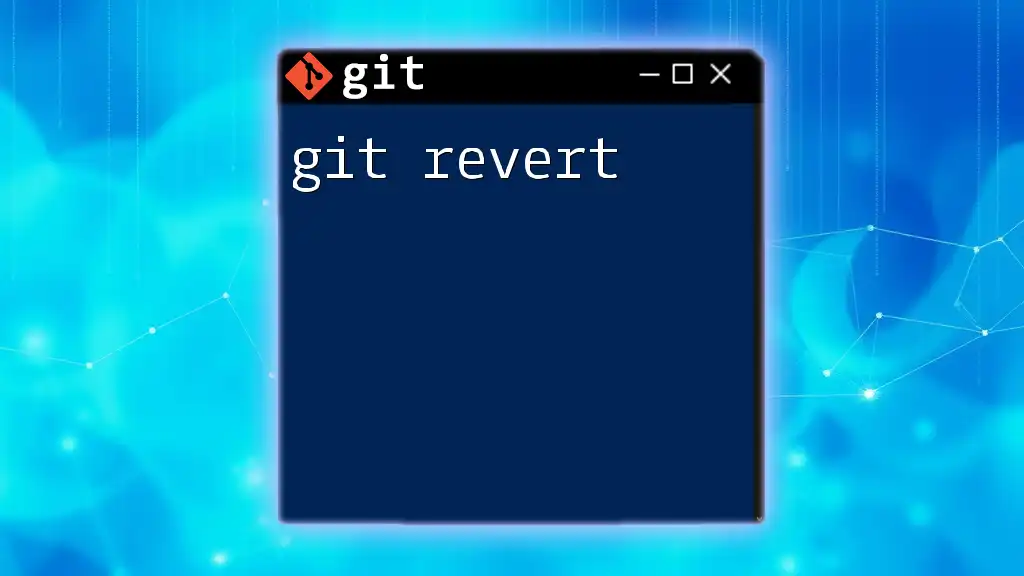Git is a distributed version control system that allows developers to track changes in their code, while Gerrit is a code review tool that integrates with Git to facilitate collaboration and improve code quality through peer review.
# Example of cloning a repository and pushing changes to Gerrit for review
git clone https://github.com/example/repo.git
cd repo
# Make changes to files
git commit -m "Your commit message"
git push origin HEAD:refs/for/master
What is Git?
Definition and Purpose
Git is a distributed version control system designed to track changes in source code during software development. It enables multiple developers to work together on a project without disrupting each other's work. Git's architecture allows every user to have a complete copy of the repository, providing redundancy and facilitating offline work.
Key features of Git include:
-
Branching: This feature allows developers to create separate lines of development within a project. Each branch can be worked on independently, making it ideal for experimenting with new features or fixing bugs without affecting the main codebase.
-
Merging: Merging combines changes from two different branches, maintaining the integrity of the project's history while integrating new features or fixes.
-
Staging area: Often referred to as the "index," the staging area enables developers to prepare changes before committing them to the history, allowing for a more organized development process.
Basic Git Commands
Some of the fundamental Git commands used to manage a repository are:
- `git init`: Initializes a new Git repository.
- `git clone`: Creates a local copy of an existing repository.
- `git commit`: Saves changes to the local repository with a descriptive message.
For example, to create a new repository and make your initial commit, you would run:
git init my-repo
cd my-repo
git commit -m "Initial commit"
These commands lay the foundation for using Git effectively in your projects.
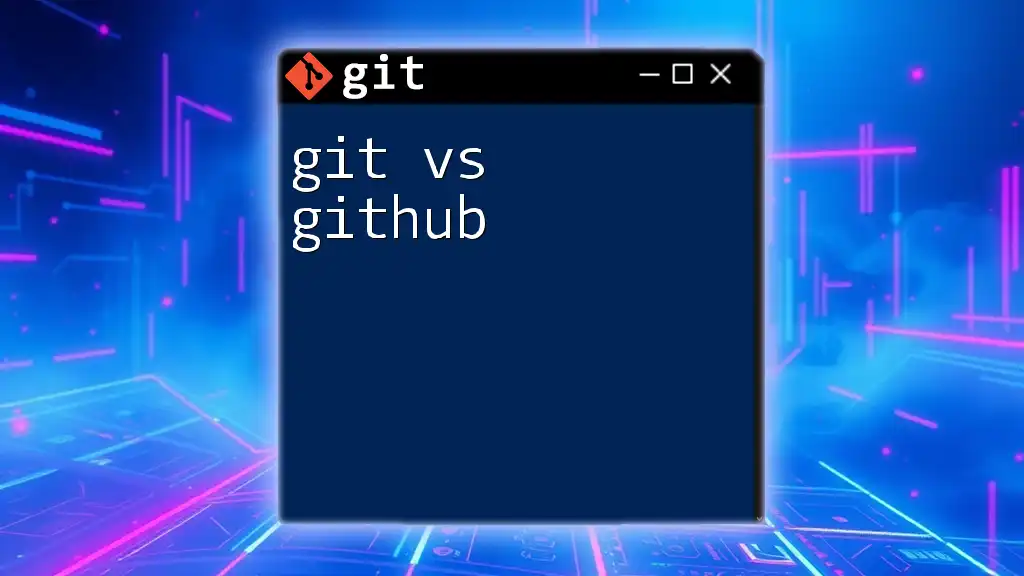
What is Gerrit?
Definition and Purpose
Gerrit is a web-based code review tool that integrates with Git repositories. Its primary purpose is to facilitate collaborative software development by providing a structured environment for reviewing code changes before they are merged into the main codebase. Code reviews are critical for maintaining high-quality standards in large teams, where multiple contributors might be working on the same project simultaneously.
Key Features of Gerrit
Gerrit extends Git's basic functionality by introducing several important features:
-
Code Review Workflow: With Gerrit, every change proposed to the codebase undergoes a review process where team members can comment, suggest changes, or approve the merge. This level of scrutiny ensures that only high-quality code is integrated.
-
Integration with CI/CD: Gerrit seamlessly integrates with Continuous Integration and Continuous Deployment (CI/CD) tools, allowing automated testing of changes before they are validated and merged. This ensures that any code additions don't break existing functionality.
-
Change Management: The user-friendly interface of Gerrit allows developers to manage changes easily. Contributors can view their proposed changes, track review comments, and resolve issues all in one place.
An example of a sample Gerrit Change Proposal could look like this:
// Sample Gerrit Change Proposal
{
"project": "example/repo",
"branch": "master",
"subject": "Refactor login module",
"status": "NEW"
}
This proposal outlines a suggested change, enabling seamless management and review.
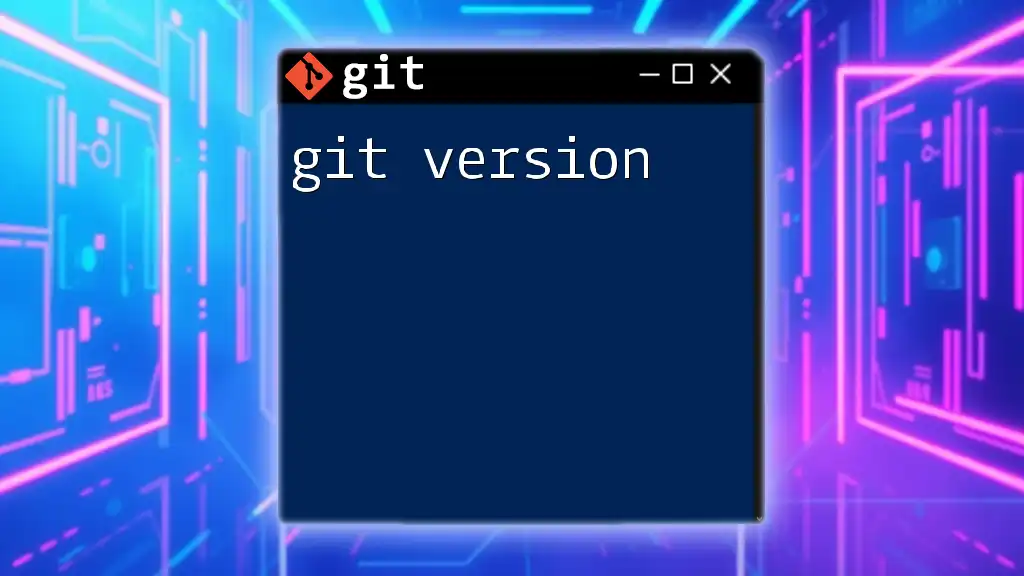
Comparing Git and Gerrit
Functional Differences
While Git and Gerrit are both essential for software development, they serve distinct roles. Git is primarily a version control system that allows for tracking changes in code over time, while Gerrit is fundamentally a code review tool that adds an additional layer of oversight and quality control. Git allows developers to work independently on their contributions, whereas Gerrit ensures teamwork occurs productively and informatively through code reviews.
Key Advantages
The advantages of Git include its simplicity and ease of use, making it approachable for beginners and solo developers. It is flexible and is ideal for projects that don’t require extensive oversight. On the flip side, Gerrit provides a structured code review process that is beneficial for larger teams. It enforces quality control through peer reviews, which is crucial for maintaining high coding standards in professional environments.
Usage Scenarios
When considering git vs gerrit, think about the size and structure of your team:
-
Use Git independently for solo projects or small teams that need straightforward version control capabilities.
-
Incorporate Gerrit for large teams working on shared projects where strict code review standards are necessary to maintain quality and consistency.
Well-known projects using Gerrit, such as Android’s source code management, demonstrate its effectiveness in handling large-scale code review needs.
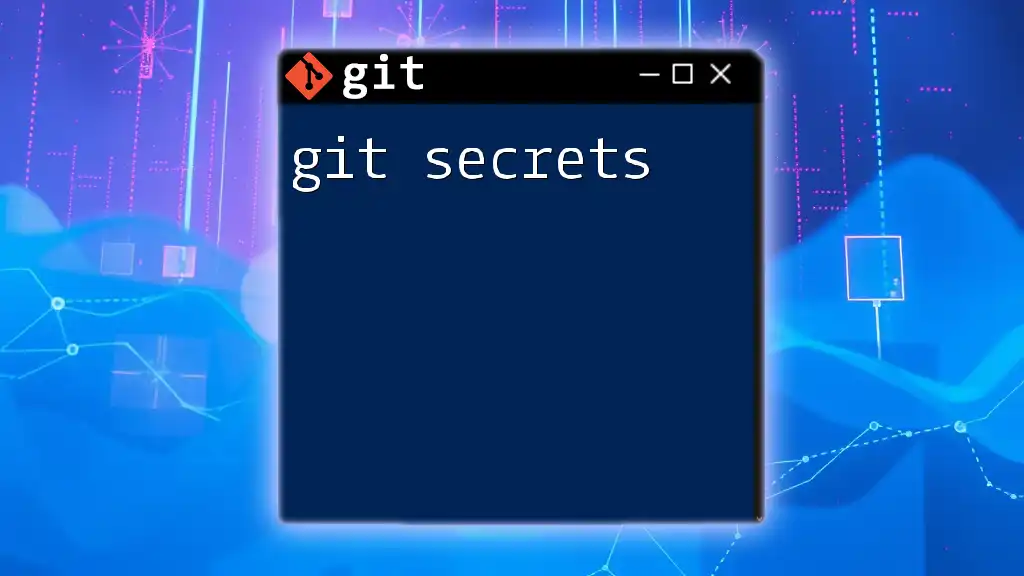
Setting Up Git and Gerrit
Installing Git
Installing Git is straightforward. Here are the basic installation commands for different operating systems:
# Mac
brew install git
# Windows
winget install git.git
# Linux
sudo apt-get install git
These commands will set you up with Git, allowing you to start tracking changes in your projects.
Installing and Configuring Gerrit
Setting up Gerrit involves several steps. First, you need to download and install Gerrit from the official site. Once installed, you'll configure it to connect with your existing Git repositories.
During configuration, you’ll adjust the settings in the `gerrit.config` file to suit your workflow and repository needs. Proper configuration is essential for leveraging Gerrit's capabilities fully.

Best Practices for Using Git and Gerrit Together
To maximize the effectiveness of both Git and Gerrit, consider these best practices:
-
Coordinate branches in Git with code reviews in Gerrit. Ensure that your branch strategies align with the review process to streamline the workflow.
-
Follow specific commit message guidelines for Gerrit. Descriptive messages aid reviewers in understanding the changes made, resulting in more constructive feedback.
-
Encourage open communication and collaboration among team members to ensure that the review process is beneficial to all parties.
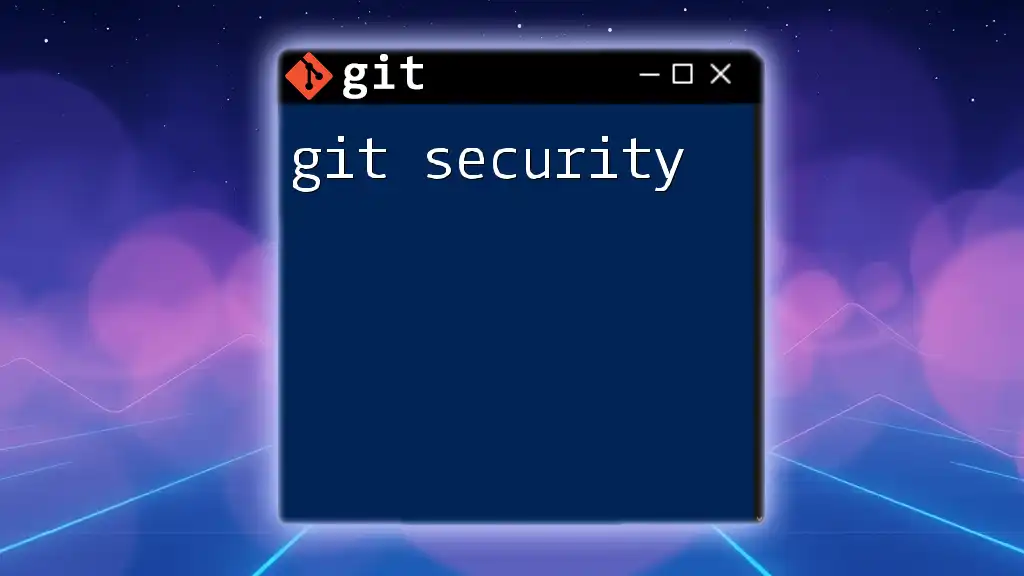
Conclusion
In the debate of git vs gerrit, understanding the key differences between these tools is crucial for developing effective software. Git serves as the backbone of version control, ideal for solo or small teams, while Gerrit adds a vital layer of review and collaboration for larger, more complex projects. By choosing the right tool—or combination of both—you can optimize your development workflow, enhance code quality, and facilitate effective teamwork.
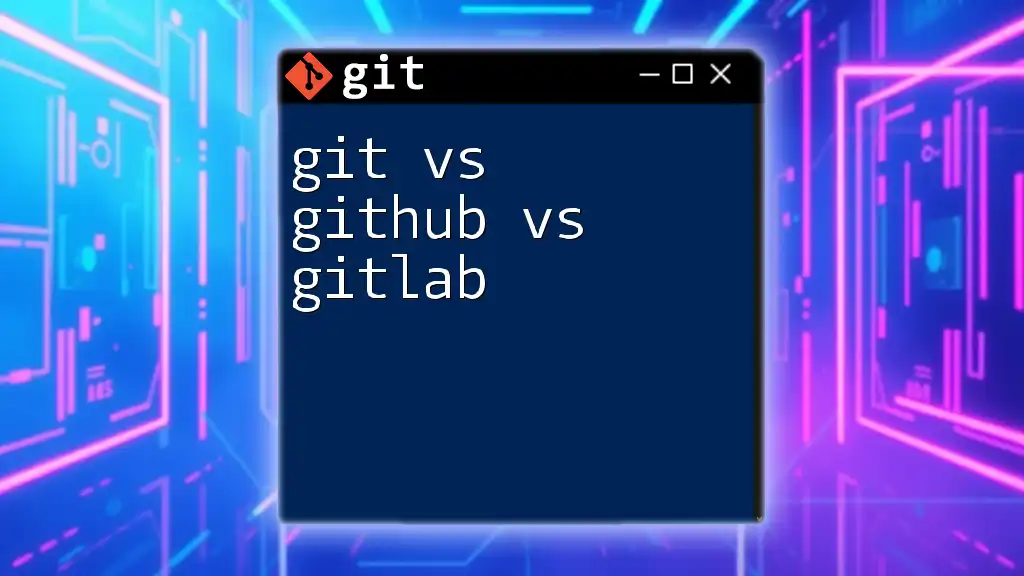
Additional Resources
For further information, consult the official documentation for [Git](https://git-scm.com/doc) and [Gerrit](https://gerrit-review.googlesource.com/Documentation/index.html). You might also explore various tutorials and community forums for deeper insights into utilizing Git and Gerrit for your development projects.

